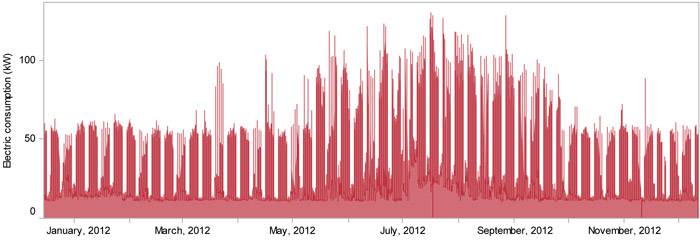Finding Big Savings: The Value of Energy Efficiency
Unleashing Energy Potential
If you have been paying attention to the energy efficiency field in recent years, you have probably noticed a great deal of excitement about the potential of data. But those of us who work with it every day will tell you that it is not about data; it is about information. Energy data on its own can be illuminating to someone who is trained to analyze it, but it is not useful until it leads to actual energy saving projects. Beyond the immediate benefits of individual efficiency projects, information that can be used to unlock energy savings has a great deal of value in our energy dependent economy. Having concrete information about projected energy savings builds the case that efficiency investments will yield real and lasting value. Ultimately, the goal is to reach a “tipping point” when all actors in the market have confidence in the accuracy of projected energy savings. This will unlock the power of capital markets to support all cost effective investments in energy efficiency in much the same way that they support the development of other energy sources.
Key Recommendations
- Data in context yields valuable energy information
- Energy information can uncover new efficiency opportunities, and increase confidence in savings projections
- Energy information may ultimately enable efficiency investments to be valued on par with energy generation
What is energy data – and why should we care about it?
Data, by itself, is a raw material, holding potential but not necessarily providing any value. In 2012, most of the electric utility meters in Vermont were converted to “smart” meters capable of recording hourly or 15 minute interval usage data. These meters have now begun to generate approximately 12 billion data points per year. Add to that the numerous monitoring points from building energy management systems, submeters, and the emergence of smart appliances, and we can expect a dramatic increase in the amount of energy data in the coming years. While this data undoubtedly holds some valuable insights, a simple representation of it provides barely a hint of its underlying meaning (see Figure 1).

The use of data producing technologies has largely been driven by the desire to improve the management of existing energy usage and infrastructure. The deployment of Vermont’s Advanced Metering Infrastructure (AMI) or “smart” meters, for example, was primarily undertaken to enable the electric utilities to better understand and manage the grid. Similarly, the installation of electric submeters on individual pieces of building equipment or circuits, as well as networked temperature, light, and occupancy sensors and other building monitoring systems, has been embraced by building owners who want to better understand and manage their buildings’ energy use. However, the data produced by AMI and building management systems can also be used to reveal energy saving opportunities. Unlocking the valuable insights encapsulated within energy data requires three critical tools: The data itself; contextual information about the building from which data was gathered (such as the operating schedule, specifications of installed equipment, etc.), and the expertise of an energy data analyst.